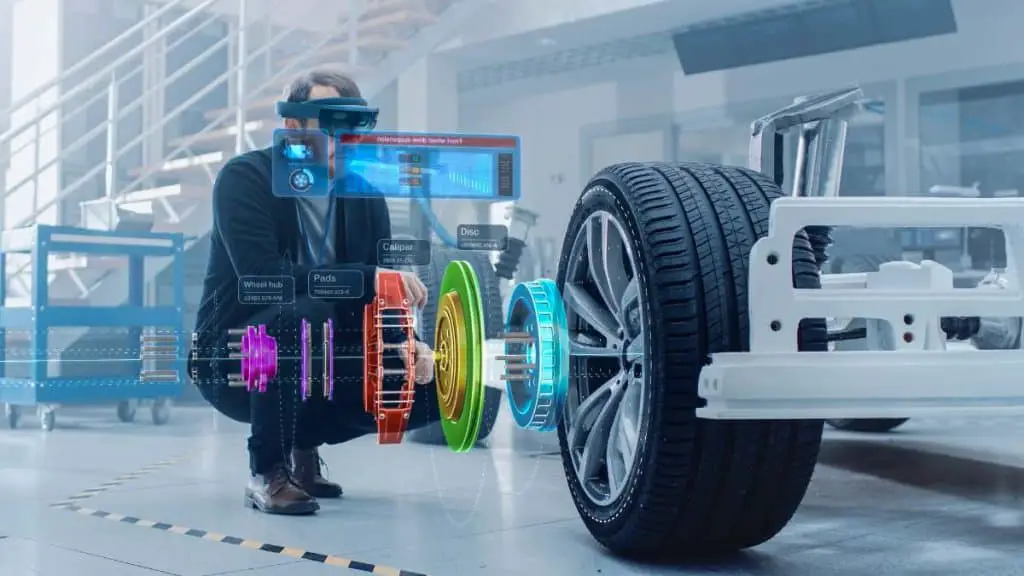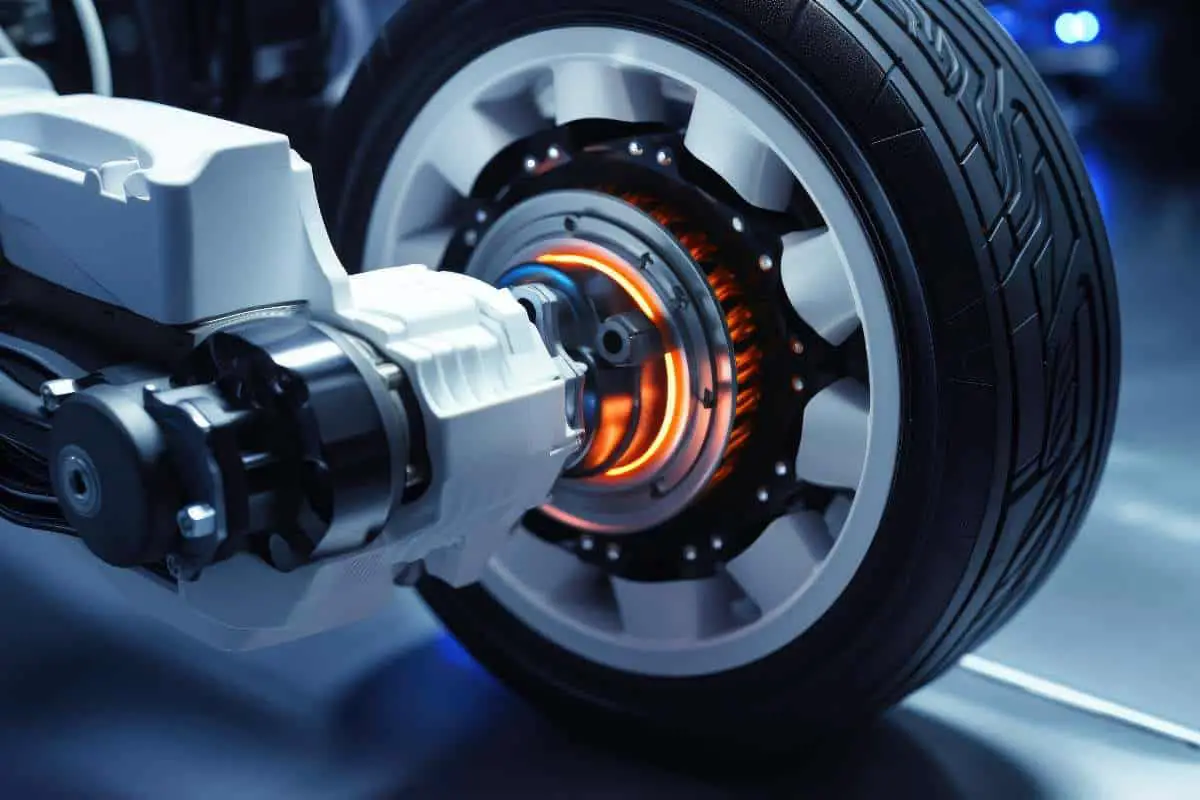Ever had one of those moments when you’re cruising in your Tesla, and the thought pops into your head, “Can I actually turn off this regenerative braking system?” Trust me; it’s not just you.
As a passionate fellow Tesla owner, I’ve found myself pondering over this very question. The fact is, that you can’t turn off regenerative braking on your Tesla.

Key Takeaways
- Tesla cars use regenerative braking. It changes moving power into battery power when you hit the brakes.
- Turning off Tesla’s “Regen” brake is not allowed. But, some models let you set it to ‘Low’ from your touch screen settings.
- Regen braking in Teslas helps save energy and keeps brakes in great shape for a long time.
- Without Regen, your car will not stop as fast and brake pads might wear out quicker.
Understanding Regenerative Braking
We dive into the concept of regenerative braking, exploring the physics that make it possible and why it’s a key feature in Tesla vehicles. We discuss its function in these high-tech cars and how it contributes to their efficient energy use.
Physics behind it
Tesla cars use a trick called regenerative braking. With this, they turn moving power into battery power. Let’s say your car is going down a hill. Instead of losing all that energy when you hit the brakes, Tesla takes it back.
Braking now creates some electricity which saves into the car’s battery for later use. This means less waste and longer lasting batteries! It really feels like magic but it’s just smart physics doing its thing!
Why it’s important
Regenerative braking is a big deal in Tesla cars. It has a job to catch and keep energy that normal brakes would lose. This helps your car go farther on one charge.
So, it’s kind of like having an extra gas tank! Regen braking also eases the wear and tear on usual brakes, keeping them healthy for longer.
That means you spend less time and money fixing your brakes!
Let me share more about how this works in Tesla cars specifically. You just can’t turn off regenerative braking completely in any Tesla model, be it Model 3 or Model X!
Now you know why it’s so important to understand this feature well before thinking about turning it off or adjusting its level of action.
Remember, if you fully make use of regenerative braking (or ‘Regen’ as we call it), your electric vehicle will show its best efficiency and range.
Can you see now why all these facts make Regen not just crucial but also handy for driving your beloved Tesla? Trust me when I say – getting used to Regen will pay off!
Function in Tesla vehicles
In a Tesla car, regenerative braking works in a smart way. As soon as you lift your foot from the gas pedal, it starts working. Instead of using regular brakes to slow down, it uses electric motors.
This system changes motion energy back into electric power. The car’s big battery takes in this power. But don’t worry! You still have regular brakes when you need to stop fast or all the way.
It makes sure the ride is smooth and also fills up the battery over time by simply driving around!

Limits of Adjusting Regenerative Braking in Tesla
Tesla does not allow you to completely turn off the regenerative braking feature. However, there are options to adjust the level of Regen on your vehicle. These options vary depending on driving conditions and battery state.
So while you can lessen its impact, turning it off entirely is not available in Tesla vehicles as of now.
Inability to completely turn off regenerative braking
Tesla made a big change in October 2020. They took out the option to stop regenerative braking in their cars. Now, you can’t turn off Tesla regenerative braking mode at all. Even if it’s a Model X or Model 3, there is no switch to turn off Teslas’ special brake.
This could be because of how the car was built or for safety reasons. Some Tesla owners want this feature back though, for different reasons like what they like or how they drive.
Options to adjust the level of Regen
I love driving my Tesla. One thing I find fun is that I can set how much Regen braking I want. Here’s how:
- Turn on the car.
- Get to the settings menu from your touch screen.
- Tap on ‘Driving’.
- Look for ‘Regenerative Braking’.
- Choose ‘Low’ to feel less pull when you lift your foot off the gas pedal.
Hypothetical Pros and Cons of Turning Off Regenerative Braking
Turning off regenerative braking could influence your Tesla’s performance and energy efficiency. On the plus side, you might feel driving is more conventional without it.
However, you’ll miss out on the benefit of energy recovery that contributes to longer battery life.
You may also notice a decrease in brake lifespan due to increased use of mechanical brakes once Regen is turned off.
Benefits of using regen
Regen braking has many good points. It helps your Tesla car save energy and gives more miles from the battery. This makes your trip longer without charging the car again. The brake parts last longer too because you use them less.
Less brake use gives you better control when you drive fast or slow down quickly. So, Regen is not just about saving power, it also keeps your car in great shape for a long time.
Drawbacks of disabling regenerative braking
Turning off Tesla regenerative braking can cause problems. One big issue is that your car will not stop as fast. Your brake pads might also wear out quicker. You see, without Regen, the car would only use the old-type brakes to slow down.
This puts a lot of stress on them and they get thin faster. The brake lights may not turn on too if Regen is set high. That’s because at times, the car slows down but it does not count as hard braking so no lights are shown up in back of your car.
Safety Considerations and Driving Tips
Navigating the world of Tesla’s regenerative braking begins with understanding its safety aspects. It’s crucial to know how to adapt to this unique feature for a smooth ride.
There might be special cases when you would want to reduce the Regen level, and we’ll delve into that too.
You may wonder if turning off Regen affects your Autopilot – I’ll address this concern as well in this section.
How to adapt to regenerative braking
Learning how to adapt to regenerative braking can seem tricky at first. But, with these helpful tips, you’ll get the hang of it in no time.
- Drive more often: The more you drive your Tesla, the better you will understand how regenerative braking works. Practice makes perfect.
- Take it easy on the brake pedal: Since the car slows down by itself when you let go of the gas pedal, you do not need to tap the brakes much.
- Drive with a light load: Heavy loads make regenerative braking less effective for safety.
- Keep an eye on the battery level: Regen works best when your battery isn’t full as it uses spare capacity to store energy.
Special cases for turning off Regen
Tesla’s Regen braking can be hard to handle in some cases. Here are a few:
- On icy roads, brakes that are too strong can cause a slide. Regen braking is always on in a Tesla, which could be risky.
- When you drive with a heavy load, Tesla says not to use just Regen and Stopping Mode for safe stops.
- You might want less brake strength if you are new to driving a Tesla car.
- The strength of Regen braking can’t be changed so you might have issues if you need less stopping power.
Impact on Autopilot functionality
Even with Tesla’s autopilot, you still need to use your foot brake. Autopilot helps with steering and speed. Yet, it doesn’t fully control braking power. Taking off Regen braking might change how autopilot works a bit.
The car may not slow down as much as it normally does when you let go of the gas pedal. It may also be harder for autopilot to keep a safe distance from other cars on the road without this feature active.
But don’t worry! Tesla’s safety systems will still work right to stop crashes even if Regen is set low or turned off.
- Tesla Charger Installation Cost (Home Setups) - March 1, 2024
- Tesla Phone Key Disconnected (Troubleshooting Guide and Quick Fixes) - March 1, 2024
- Tesla FSD 12 (Explained) - March 1, 2024